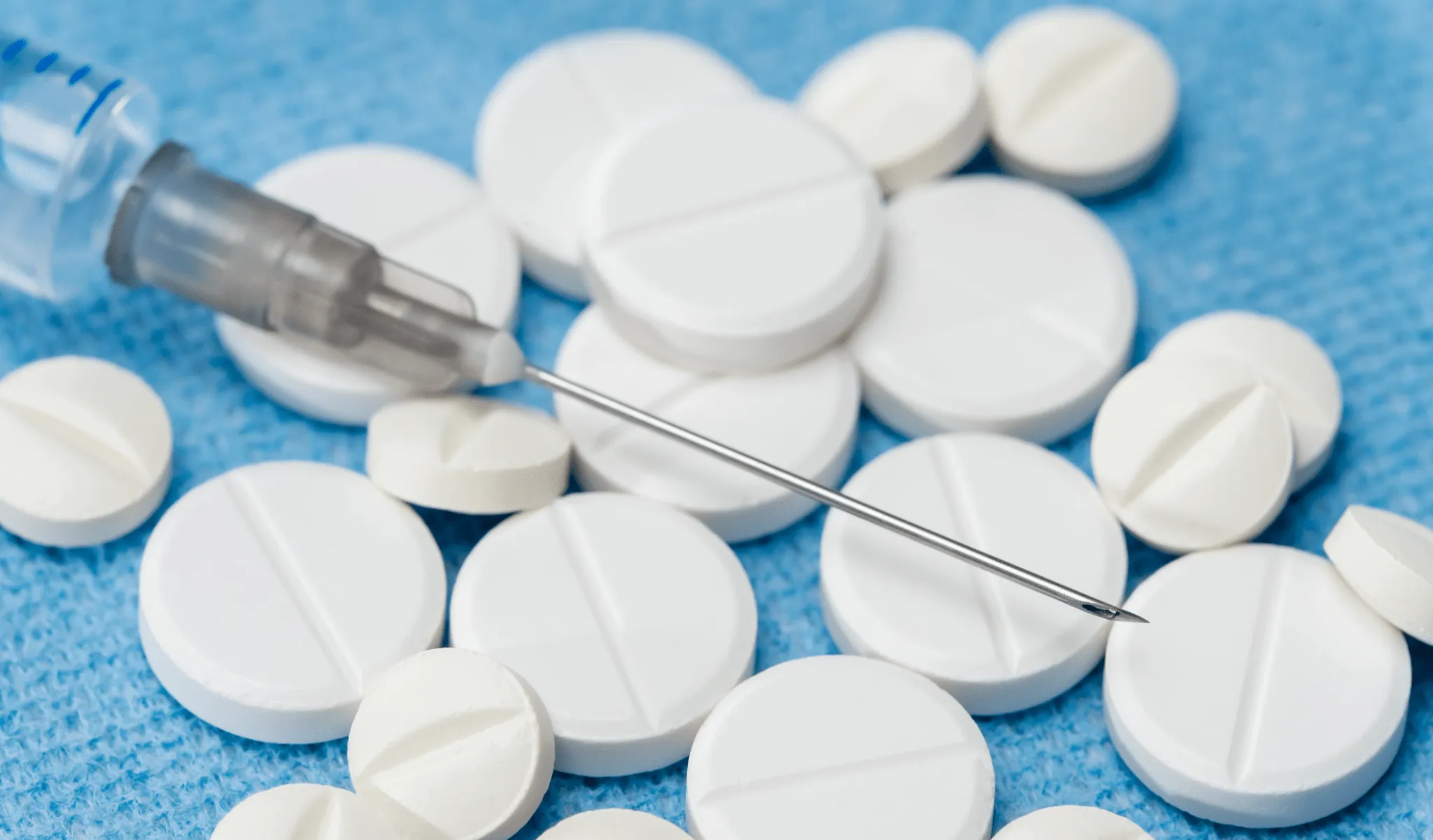
Injections bypass digestive breakdown, delivering drugs directly into the bloodstream. This rapid systemic distribution is vital for emergencies like anaphylaxis or sepsis. Pills lose precious time dissolving in the stomach.
Chronic Condition Management and Adherence
Monthly injectables for rheumatoid arthritis improve compliance compared to daily pills. Missed doses decline when treatment becomes routine rather than a daily chore. Complex regimens often fail with oral medications.
Gastrointestinal Degradation and Drug Efficacy
Acidic stomach environments destroy medications like insulin or certain antibiotics. Injections preserve molecular integrity, ensuring full therapeutic impact. Pills require enteric coatings or stabilizers to survive digestion.
Pain Perception and Needle Phobia
Despite superior efficacy, injections face resistance due to needle anxiety. Oral alternatives attract patients who prioritize convenience over potency. Clinics now use microneedle patches to bridge this gap.
Cost Barriers and Manufacturing Complexities
Injectable drugs cost 3-5 times more than oral equivalents due to sterile production requirements. Insurance often restricts coverage, forcing patients toward cheaper, less effective pills.
Hormone Therapies and Precision Dosing
Testosterone replacement via injection maintains steady blood levels versus oral peaks and crashes. Endocrinologists prefer injections for predictable absorption in hormone-sensitive treatments.
Vaccine Development and Immune Response
Intramuscular flu shots trigger stronger antibody production than oral vaccines. Mucosal pill vaccines for diseases like cholera exist but remain exceptions due to weaker immune activation.
Psychiatric Medication Absorption Challenges
Schizophrenia patients often metabolize oral antipsychotics unpredictably. Long-acting injectables ensure consistent drug levels, reducing relapse risks by 30% in clinical trials.
Pediatric Preferences and Administration Hurdles
Children struggle with pill-swallowing, making liquid formulations or injections preferable. Fear of needles complicates this balance, pushing researchers toward dissolvable oral films.
Cancer Treatment and Targeted Delivery
Chemotherapy pills face erratic absorption in damaged guts. IV or subcutaneous injections allow precise dosing, critical for drugs with narrow therapeutic windows.
Opioid Crisis and Abuse Deterrence
Injectable naloxone reverses overdoses faster than nasal sprays or pills. Abuse-resistant injectable formulations deter tampering compared to crushable oral opioids.
Migraine Rescue Therapies and Speed
Sumatriptan injections relieve attacks in 10 minutes versus 2 hours for pills. Speed matters when migraines escalate to vomiting, rendering oral drugs ineffective.
HIV Prevention and Prophylaxis Options
Pre-exposure prophylaxis (PrEP) pills dominate, but injectable cabotegravir lasts two months. Adherence spikes for high-risk groups who avoid daily pill routines.
Autoimmune Flare-Ups and Rapid Intervention
Steroid injections halt acute multiple sclerosis relapses faster than oral prednisone tapers. Delayed treatment risks permanent neurological damage during inflammatory cascades.
Osteoporosis and Bisphosphonate Efficacy
Annual IV zoledronate reduces fracture rates more reliably than weekly oral alendronate. Gut absorption issues plague 20% of pill users, undermining protection.
Antibiotic Resistance and Tissue Penetration
Severe infections require injectable vancomycin to achieve bone or lung concentrations unattainable orally. Overusing IV antibiotics, however, fuels resistant superbugs.
Fertility Treatments and Hormone Timing
Injectable gonadotropins precisely control ovulation cycles for IVF, outperforming clomiphene pills. Oral alternatives suffice only for mild ovulation disorders.
Parkinson’s Disease and On-Off Phenomena
Subcutaneous apomorphine injections rescue patients from sudden mobility freezes. Oral levodopa’s erratic absorption worsens motor fluctuations in advanced stages.
Vitamin Deficiencies and Absorption Limits
B12 injections correct deficiencies in pernicious anemia where pills fail due to intrinsic factor issues. Oral megadoses work only for mild cases.
Erectile Dysfunction and Onset Speed
Alprostadil injections produce erections in 5-10 minutes versus 30+ minutes for oral PDE5 inhibitors. Injected risks include priapism, demanding careful patient selection.
Glaucoma and Intraocular Pressure Spikes
Emergency injectable acetazolamide lowers eye pressure faster than oral doses during acute angle-closure attacks. Delayed treatment risks permanent vision loss.
Obesity Pharmacotherapy and Appetite Suppression
GLP-1 agonists like semaglutide show better weight loss as weekly injections versus daily oral counterparts. Sustained release enhances satiety signaling.
Malaria Prophylaxis and Traveler Choices
Injectable options are scarce, forcing travelers to adhere to weekly oral doxycycline. Poor compliance explains breakthrough infections in endemic regions.
Menopausal Hormone Delivery Preferences
Though oral estrogen dominates, transdermal patches and injections avoid liver metabolism risks. Thrombosis rates drop with non-oral routes in high-risk patients.
Tuberculosis and Directly Observed Therapy
Injectables like streptomycin are reserved for drug-resistant TB due to toxicity. Oral multi-drug regimens remain first-line but require strict adherence monitoring.
Psoriasis and Biologic Accessibility
Self-administered TNF-alpha inhibitor injections clear plaques better than oral methotrexate. Cost and insurance hurdles limit access despite superior outcomes.
Iron Deficiency and Anemia Correction
IV iron injections restore hemoglobin faster than oral supplements in inflammatory bowel disease. Gut inflammation blocks iron absorption from pills.
Epilepsy Rescue Medications and Portability
Rectal diazepam gel outsells injectable midazolam for seizure clusters due to ease of use. Injectable versions dominate hospital settings for status epilepticus.
Allergy Immunotherapy and Long-Term Outcomes
Sublingual pills for hay fever match injection efficacy after 3 years. Patients choose injections for faster symptom relief during initial therapy.
Telehealth and Self-Injection Training
Virtual coaching improves injection technique for diabetes patients. Oral drug users require less support, reducing telehealth utilization in chronic care.
Storage and Stability Constraints
Insulin injections demand refrigeration, complicating travel. Oral antidiabetics like metformin tolerate heat but lack comparable glucose control potency.
Substance Use Disorders and Relapse Prevention
Monthly naltrexone injections block opioid cravings more reliably than daily pills. Missed oral doses correlate with higher relapse rates.
Rare Diseases and Orphan Drug Formats
Enzyme replacement therapies for lysosomal disorders work only via injection. Oral small molecules can’t replicate protein-based mechanisms in conditions like Gaucher disease.
Dental Procedures and Anesthetic Choices
Injectable lidocaine remains the gold standard for pain control. Oral sedatives like diazepam assist anxious patients but don’t eliminate injection needs.
Veterinary Medicine and Animal Compliance
Cats tolerate subcutaneous fluids better than forced pills. Livestock vaccines prioritize injections to ensure herd-wide coverage versus unreliable oral dosing.
Drug Development Costs and ROI Pressures
Injectable biologics yield higher profits despite complex manufacturing. Pharma firms prioritize them over oral generics, skewing research toward injectable pipelines.
Placebo Effects and Administration Routes
Patients perceive injections as “stronger” than pills, amplifying placebo responses in pain trials. This complicates efficacy comparisons in clinical studies.
Counterfeit Drug Risks and Verification
Injectables face fewer counterfeits due to complex packaging. Oral generics flood markets with substandard products, especially in low-regulation regions.
Pregnancy and Teratogenicity Concerns
Some injectable anticoagulants like heparin are safer than warfarin pills during pregnancy. Placental transfer rates vary by administration route.
Sports Medicine and Doping Detection
Injectable steroids leave detection windows shorter than oral versions. Athletes exploit this, though advanced testing now identifies metabolite differences.
Hospice Care and End-of-Life Comfort
Subcutaneous morphine injections relieve breakthrough pain faster than oral opioids. Swallowing difficulties in late-stage illnesses make injections unavoidable.
Cultural Perceptions and Historical Trust
Older generations view injections as “real medicine” compared to pills. Marketing campaigns in Asia capitalize on this, boosting injectable cosmetic drug sales.
Nanotechnology and Future Oral Alternatives
Liposomal encapsulation may let oral drugs rival injection bioavailability. Early trials for hepatitis B show promise but haven’t displaced injectable vaccines.
Drug Addiction and Route-Specific Cravings
Heroin injectors report stronger cravings than smokers, highlighting administration’s role in addiction severity. Oral methadone curbs injection urges in recovery programs.
